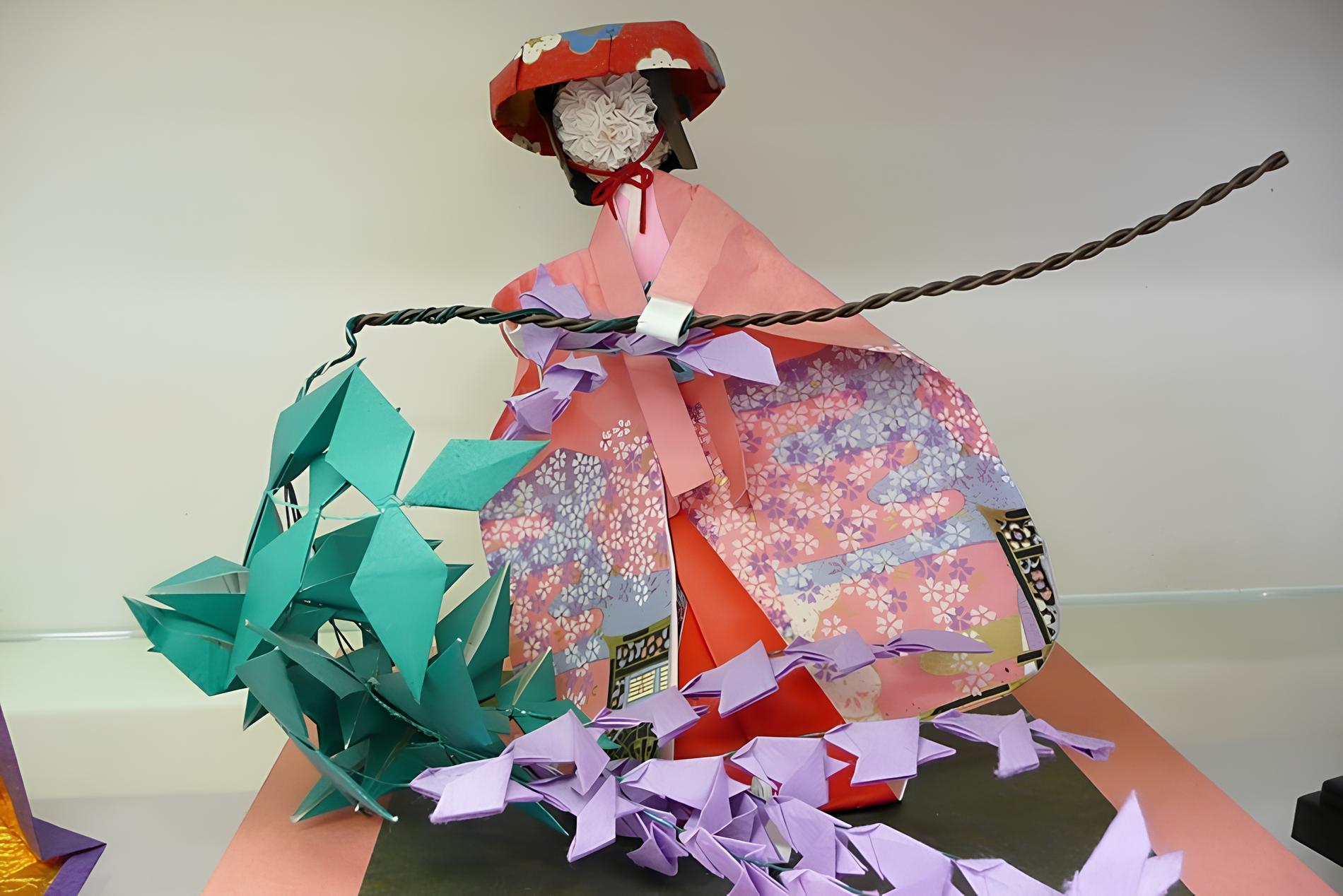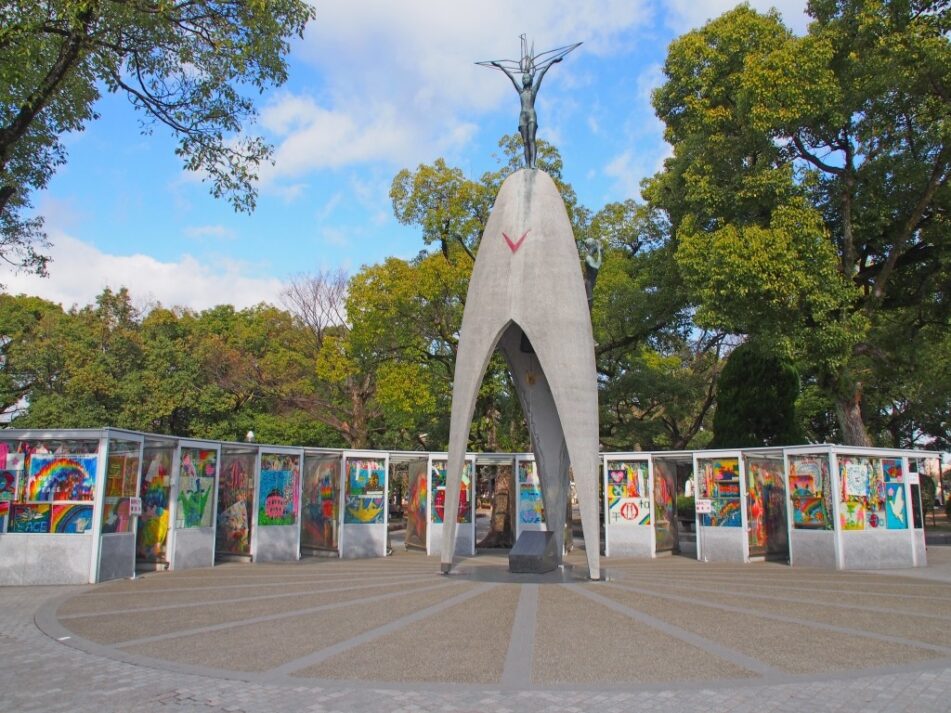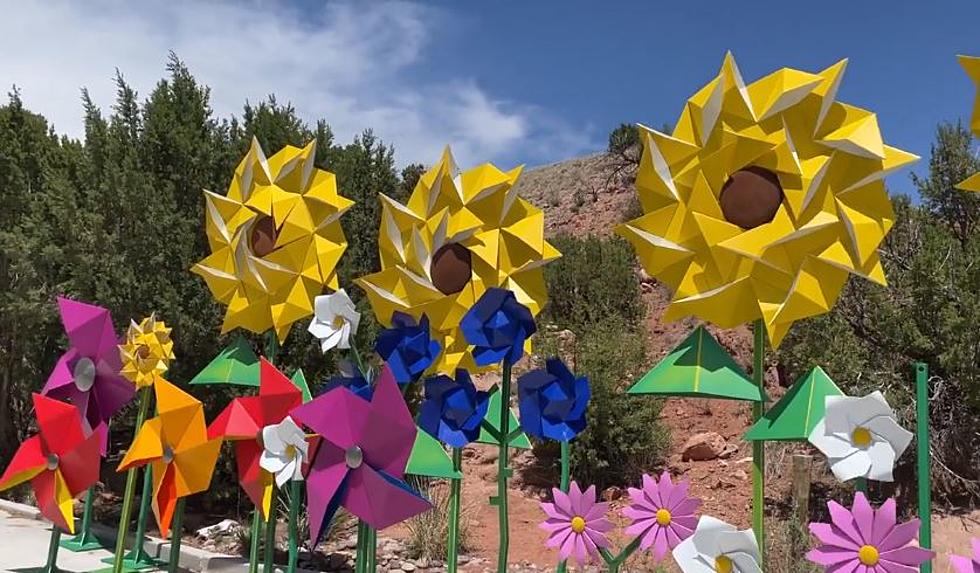
Over the centuries, many Japanese artists have elevated this traditional art
Since the time over 1500 years ago, when Damjing, a Korean monk is reputed to have brought paper from China to Japan in the 6th century, the art of Origami has not only evolved, but impregnated every aspect of Japanese culture.
Noshi, perhaps the first known practice of origami in Japan, is presumed to have developed during the Heian period (794-1185 AD). In this, simple folded paper was attached to gifts as a form of decoration. However, the exact date of origami’s origin remains uncertain. According to the Encyclopedia Britannica, studies suggest that origami was invented by the Japanese about a thousand years ago, but its roots may be in China.
As paper became more accessible, the art of folding metamorphosed into more intricate forms. Anything, from animals, plants to living creatures, was created with these folds of paper, giving birth to ‘origami’ as we know it today. ‘Ori’ is the Japanese for folding and ‘gami’ means paper.
Over the centuries, many Japanese artists have elevated this traditional art, opening the doors to a new artform with their origami creations. These origami designs encapsulate many essential elements of Japanese culture and years of legacy. There are many tourist attractions around Japan for visitors who want to explore this exquisite traditional art and the varied connotations around it linked to each place.
Tower of a Thousand Cranes, Hiroshima

Sasaki’s statue today stands as part of the Children’s Peace Monument in the Hiroshima Peace Memorial Park
In a park in Hiroshima, a statue of the young girl looking up to the sky while holding a large origami crane, is decked with many other brightly-coloured paper cranes around it. Those are sent by well-wishers from different corners of the world. The thousands of surrounding origami cranes symbolise their collective wishes for a more peaceful world, devoid of nuclear weapons.
In the aftermath of World War II bombings, a young girl named Sadako Sasaki began folding 1,000 cranes since an old Japanese legend held that folding 1,000 cranes would make any wish come true. Sasaki believed that if she folded the cranes, it would heal her from the effects of radiation. However, she died before she could fold the 1,000 cranes.
Known as the Tower of a Thousand Cranes, Sasaki’s statue today stands as part of the Children’s Peace Monument in the Hiroshima Peace Memorial Park. It was erected in honour of Sasaki and all the children who died because of the atomic bombing. Symbolic of repelling warfare, visitors at the monument often leave folded origami cranes as reminders of peace, love and hope for a world free from nuclear warfare.
A forest spun out of origami, Tokyo

This urban park blends nature with art, showcasing the creativity of the community
Its creative twist is in the medley of colourful origami works hanging from its trees in the park. For Origami Forest in Adachi Ward, situated in Tokyo, the idea is an entire forest spun out of colourful origami. This distinguishes it from a simple museum or traditional exhibition space theme.
These origami installations are credited to local residents, art enthusiasts, or volunteers who come together to decorate paper cranes, flowers and other origami designs onto the branches of the trees, creating a vibrant and colourful display.
This urban park blends nature with art, showcasing the creativity of the community. Since the Origami Forest is a community-driven initiative, the displays and origami creations are known to change periodically.
Origami Kaikan’s colourful exhibits, Tokyo

Origami Kaikan hosts a collection of over 2,000 works
To learn the art right from the beginning, from watching how paper is dyed with raw colours to the finished handiwork of beautifully crafted origami creations, visitors can discover almost everything about the origami universe from a collection of over 2,000 works at the Origami Kaikan, an exhibition centre in Tokyo.
Hand-dyed washi, or Japanese style hand-made paper craft, is showcased in the fourth-floor studio where each sheet of paper is dyed by a craftsman one by one. Origami Kaikan is entirely dedicated to the art of origami. It houses a gallery of the artworks and a gift shop selling washi, origami and folk art.
Exhibitions at the centre have showcased many origami maestros, including the renowned Akira Yoshizawa, acclaimed as the father of modern origami, to the prolific Tomoko Fuse, known for her modular origami designs and intricate geometric patterns. The centre offers a lucid journey into the artists’ lives through their curated works.
For American physicist-turned origami artist Robert J Lang, complex and elegant designs dominat his body of work, most notably of insects and animals. Lang studied the mathematics of origami and used computers to study the theories behind origami. Satoshi Kamiya’s phoenix, pegasus, ancient dragons and other works have been regarded for their precision and lifelikeness, while Toshikazu Kawasaki’s iconic and widely folded origami model the ‘Kawasaki rose’ has earned him a place among the well-respected origami artists.
Kaikan also hosts lessons for visitors from beginners to advanced, including various types of paper crafts such as origami paper folding, dolls made of Japanese paper, Mizuhiki or a decorative Japanese cord made from twisted paper, and craft work.
Temples and shrines

Sensoji temple, located in Asakusa, Tokyo, is one with a long-standing tradition of incorporating origami as part of the omikuji, or fortunes
Origami is also used as decoration at some most famous Japanese temples. Kiyomizudera shrine, officially known as Otowa-san Kiyomizu-dera, is a UNESCO World Heritage Site and a highly regarded temple in Kyoto. Surrounding the temple grounds are fascinating small origami cranes or other simple origami decorations left by visitors as offerings.
Sensoji temple, located in Asakusa, Tokyo, is one with a long-standing tradition of incorporating origami as part of the omikuji, or fortunes, that visitors can obtain by making a small offering in origami forms.
Fushimi Inari Taisha shrine in Kyoto is adorned with thousands of vermilion torii, or traditional Japanese gates, that lead up to Mount Inari. Leaving folded origami cranes or other paper-folding offerings along the pathway is an auspicious tradition.
Signifying prayers for peace, good fortune, health or other personal wishes, such origami offerings are aplenty in temples and shrines across Japan. Local people as well as visitors alike express their dreams and intentions through symbolic gestures enfolded in the delicate origami art.
















